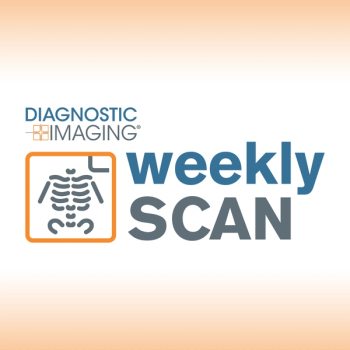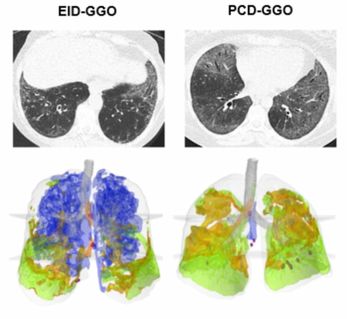
Film vendors project healthy, mostly digital, revenue futures
Much has been written about the major modality companies—primarily Siemens, Philips, GE, and Marconi—expanding beyond their core equipment businesses to become information and application service providers. But these vendors are not alone in
Much has been written about the major modality companiesprimarily Siemens, Philips, GE, and Marconiexpanding beyond their core equipment businesses to become information and application service providers. But these vendors are not alone in their transition. The three largest film companies in the worldKodak, Fuji, and Agfaare also broadening their strategies in the healthcare sector to keep pace with the evolution from analog to digital imaging.
In fact, while all three say the film business is growing (albeit at a single-digit pace), all are projecting significant revenue increases in the healthcare sector over the next few years, due in large part to their growing bases of digital diagnostic imaging products. In some senses, this shift from traditional film-based products to electronic imaging products and services is not a surprise because it parallels a similar shift occurring in the healthcare community. What is interesting to note is that, like the major modality vendors, film vendors are trying to change their image.
As the industry starts to converge, comparing film vendors only to film vendors becomes less and less relevant, said Rick Cimino, chief marketing officer for Kodak Health Imaging in Rochester, NY. It is more relevant to compare us to the software, modality, and information systems companies.
Kodak corporate expects to generate $24 billion in revenue by 2005, up from $14.1 billion in 1999, with 45% of that revenue coming from digital products and services (versus 20% in 1999). The bulk of this growth is expected to come from the companys commercial division, which includes health imaging. This sector is expected to contribute $485 million in revenue in 2002, up from $115 million in 1999.
Cimino maintains that the companys core diagnostic imaging business (i.e., film) will continue to see single-digit growth over the next few years and should reach $25 billion by 2004, and that Kodak is actually capturing market share in the film business worldwide. Kodak has been promoting itself as an integrated imaging solutions company since last years RSNA meeting, however. The strategy includes investing in numerous digital technologies and companies and partnering its way into new market niches such as digital radiography (via an alliance with Analogic), information systems and services, and Web-based models. In fact, Kodak Health Imaging plans to launch more than 45 new products this year, 80% of which are digital, according to Cimino.
The company as a whole is migrating toward digital, and the health imaging division is leading the way, Cimino said. In the future, from a business model, I can prove that we can make better margins and have better profitability in a completely filmless business.
Other film vendors increase medical businessAgfa is also predicting significant revenue increases in its medical imaging business, as its strategy to increase its digital product and service offerings begins to bear fruit. Agfa claims a 39% share of the U.S. medical imaging market, although the majority of this still comes from its analog products. Agfas Medical Image business is already the largest revenue generator within the Belgium-based companys Technical Imaging group and boasts the highest profit margins within the companyabout 17%. The Technical Imaging division accounted for 29% of Agfas $4.4 billion in revenue in 1999 and is expected to become Agfas best-selling division over the next four to five years, according to chief executive Klaus Seeger.
The bulk of this growth will come from the medical imaging business, where the focus of the companys strategy has shifted from selling equipment to selling software and other extended services. In the first quarter of this year, nearly one-third of the medical imaging groups revenue was from digital products, including dry laser printers, computed radiography, digital radiography, and PACS. Sales of these digital products grew by more than 100% year on year in the first quarter.
This confirms our strategy of using our strength in traditional business to open up new growth markets with innovative systems, Seeger said.
He added that as the movement toward digital-based radiology departments gathers momentum, the ratio of analog to digital product sales should be expected to change. However, this evolution should not result in financial disadvantages for those vendors that are well positioned to manage the shift from traditionally profitable film systems to digital products.
Fuji has also embraced the analog-to-digital transformation in medical imaging, most notably with its Synapse PACS product, which was one of the first to incorporate Web-based capabilities and promote a client-server, PC-based approach to image management and workflow. While the company is less than forthcoming with its financials, the medical imaging business is very important to Fuji Photos $13 billion global business, according to Clay Larsen, managing director of marketing for Fuji Medical Systems USA in Stamford, CT.
Film usage also growingFilm usage in the medical field is still growing about 5% per year, Larsen said. But Fujis commitment to digital technology, its expertise in digital imaging and detection systems and components, and the fact that it designs and manufactures all of its own products leaves the company well-positioned to capture more market share as the shift from analog to digital imaging continues, he addedespecially as imaging moves increasingly online.
Part of our strategy in not buying a PACS company and jumping into the PACS business earlier was to take advantage of newer technologies, Larsen said. Installation complexity and systems administration and service complexities are much lower for pure NT client-server PACS, and our ability to do software-only installs is good evidence of where the market is going.
This includes the new ASPs and other Web-based models, Larsen said. In the long run, the real question is how all the vendors in this market will handle the new digital imaging technologies and PACS from a profitability standpoint.
The key for both film and modality companies is to take on this new PACS networking business in a profitable way, and that has a lot of ramifications in how the technology is architected and serviced, Larsen said.
Newsletter
Stay at the forefront of radiology with the Diagnostic Imaging newsletter, delivering the latest news, clinical insights, and imaging advancements for today’s radiologists.




























